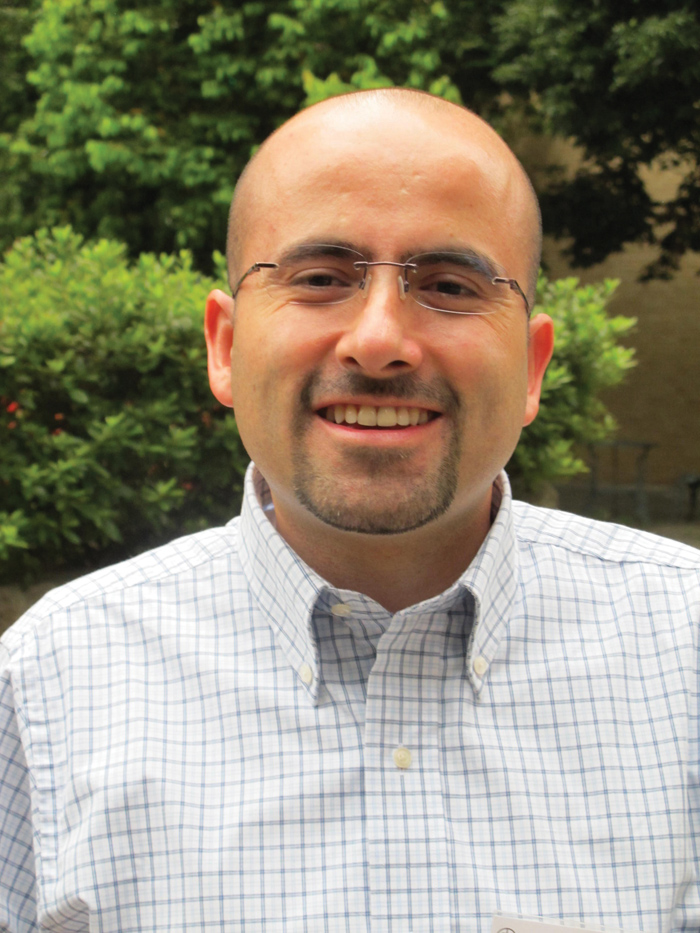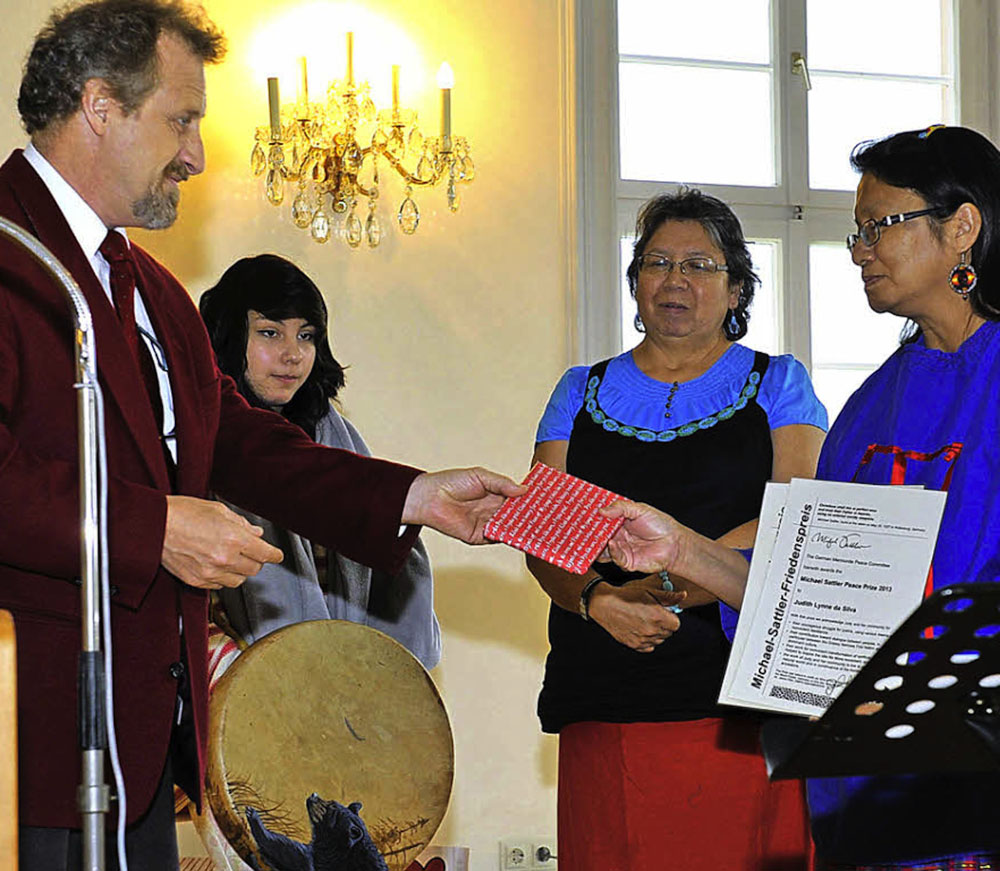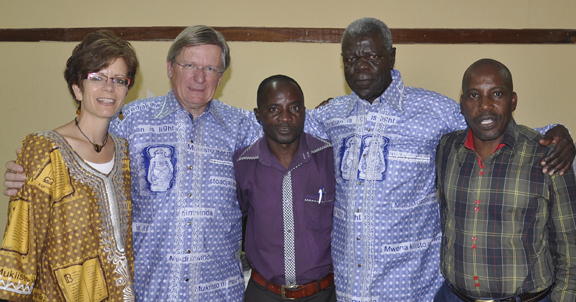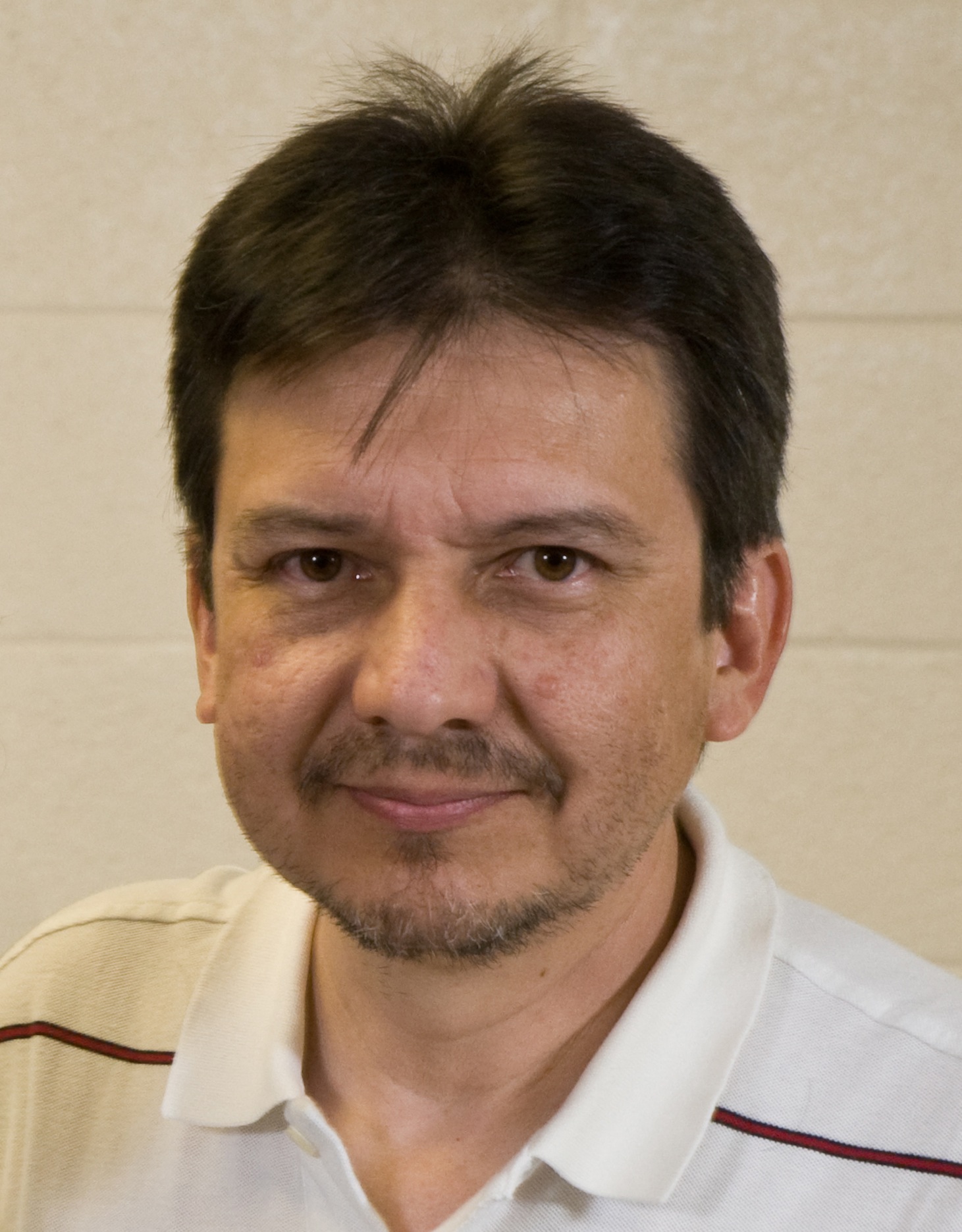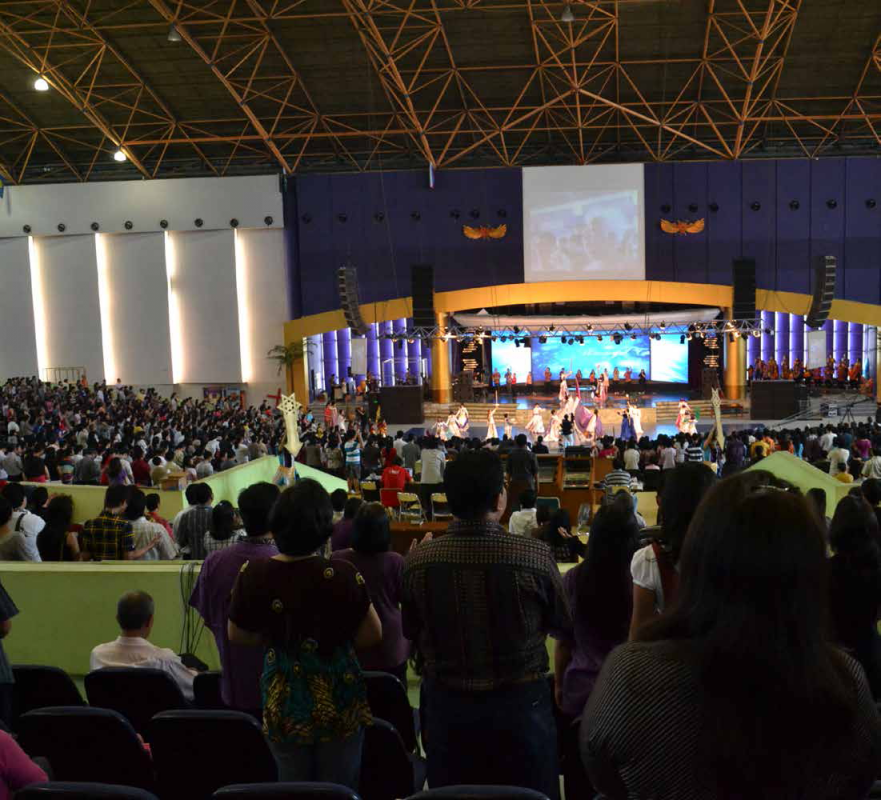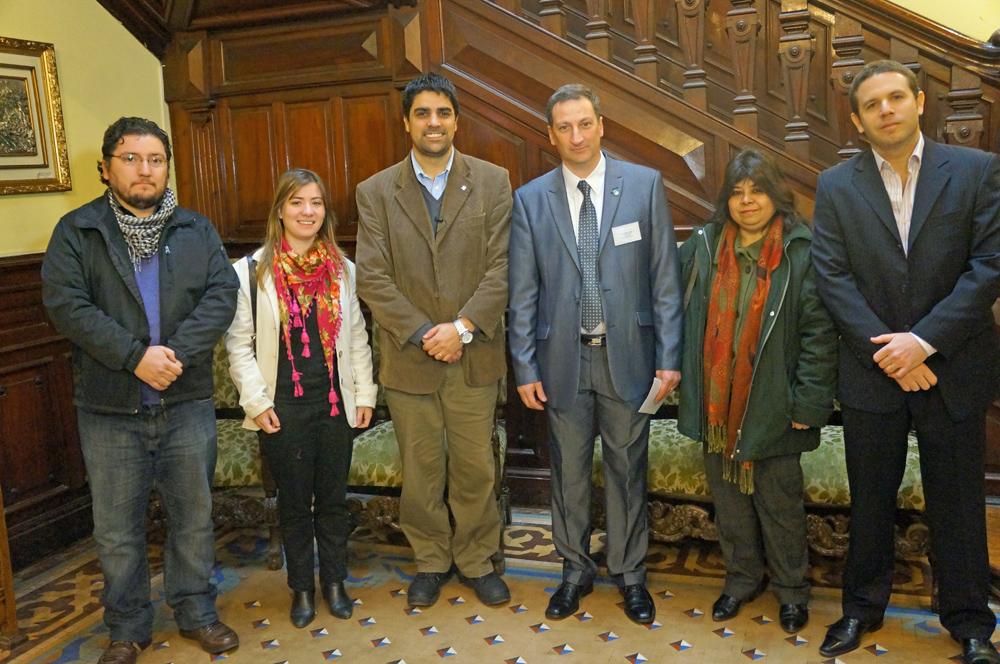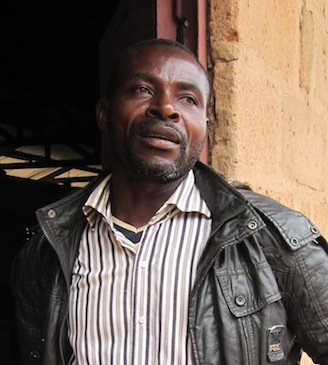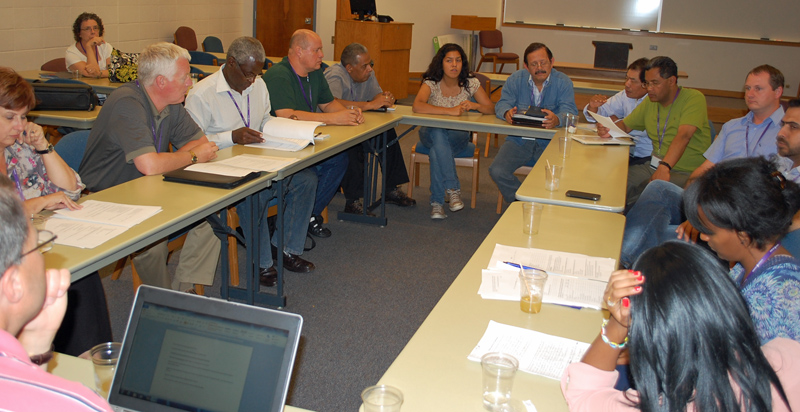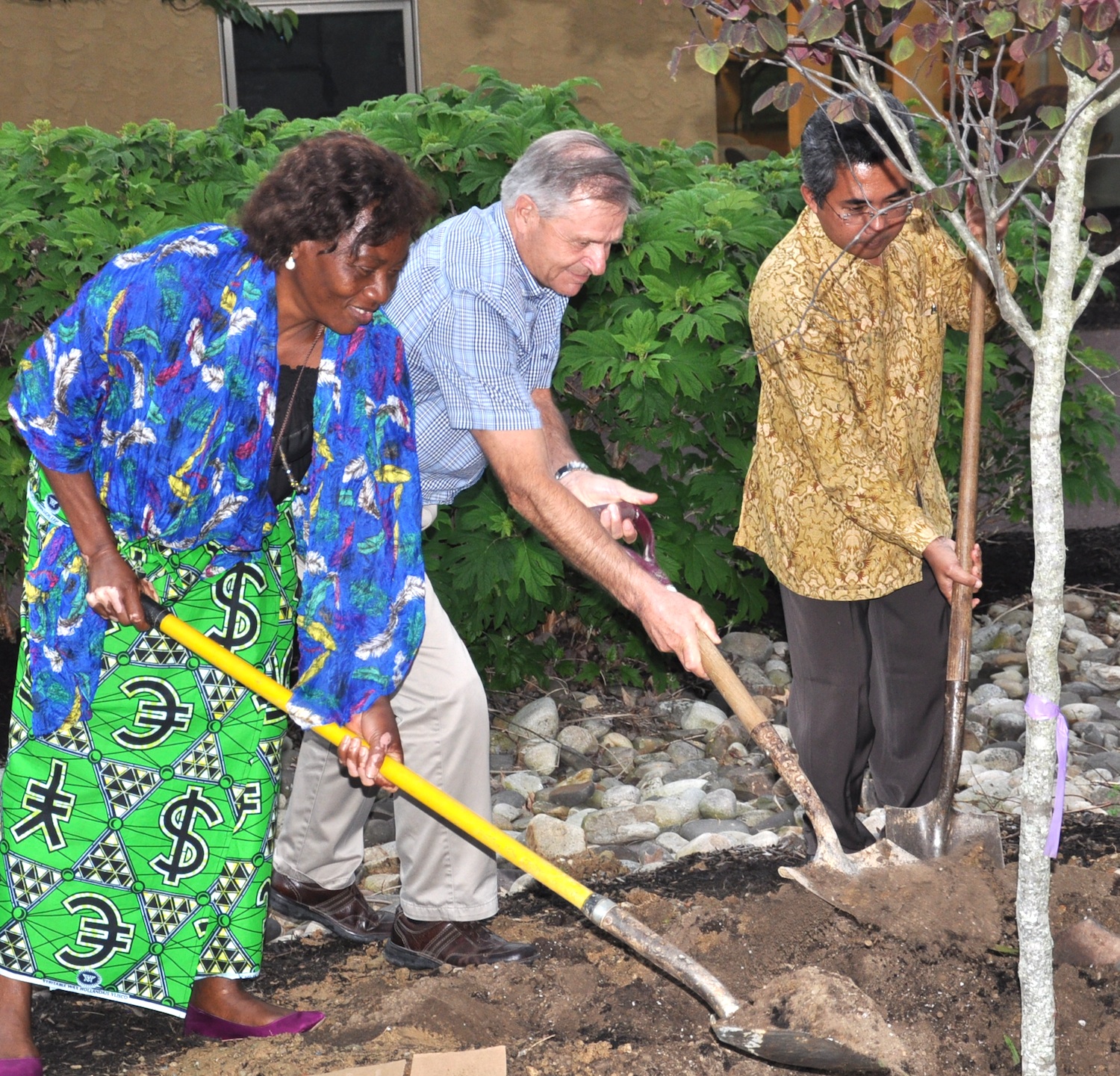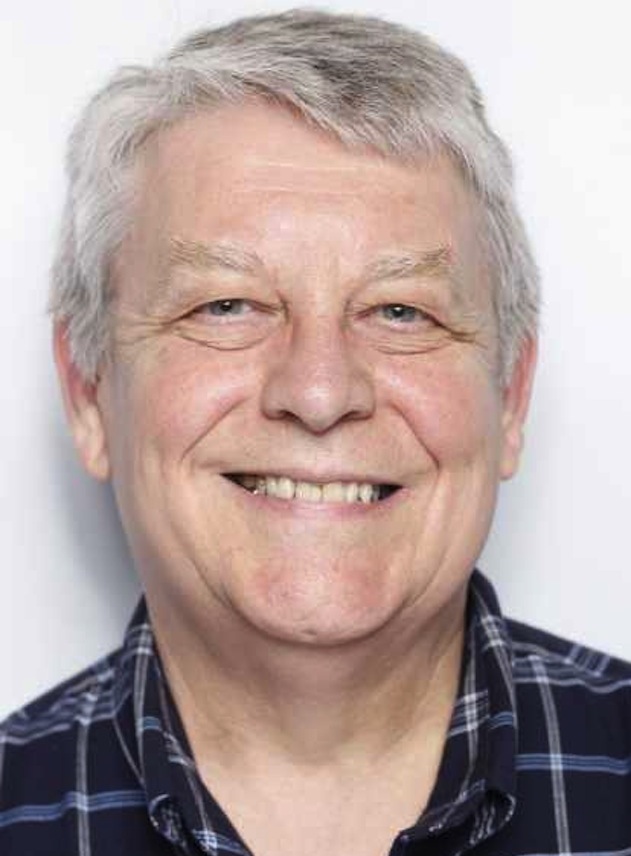-
Called to be a Global Communion
Some years ago a woman with a foreign accent – a friend of mine – knocked on the door of one of our churches in Bogotá. That church’s pastor – another friend of mine – opened the door. The woman was evangelizing that neighborhood and started to talk with my friend without knowing about his…
-
Grassy Narrows woman awarded peace prize in Germany
Germany – Judy DaSilva, a First Nations woman from Grassy Narrows, Ontario, Canada, has been awarded the Michael Sattler Peace Prize from the German Mennonite Peace Committee. “We want to award the prize to Judy DaSilva in order to honour the nonviolent resistance of the Grassy Narrows First Nation against the destruction of nature and…
-
Visit with Angolan churches both inspiring and troubling
Angola – An enthusiastic and joyous welcome and long lists of needs greeted a Mennonite World Conference (MWC) delegation during a visit to member churches in Angola the first week of September 2013 – a follow up to an earlier delegation in April. (See related article about the April visit.) The purpose, according to Henk…
-
Integrating All Areas of Life
Exploring our shared commitment to worship As a global communion of Anabaptist-related churches, we share a common commitment to gathering regularly for worship. Yet our tremendous diversity means that we carry out this commitment in very different ways. In the October 2013 issue of Courier/Correo/Courrier, leaders from across our fellowship write about different ways in…
-
Indonesia: Struggling, learning, serving
The Mennonite community in Indonesia is diverse and dynamic! Discussing its origins and development may bring to mind many questions, especially for those in the Global North: How did Mennonitism take root in Indonesia? How did Indonesia become the fifth-largest Mennonite centre in the world? And how did people with names like Dharma, Widjaja, Pasrah,…
-
Mennonites accompany Islamic community in its religious celebration
I have been the coordinator of the Argentine Chapter of the Latin American Youth Inter-Religious Network of Religions for Peace for four years (position that I will be retiring from at the end of the year). Our community (Iglesia Anabautista Menonita de Buenos Aires) is part of the above network. We understand that as a historic peace…
-
Delivering living water in Congo
Mbuji Mayi, Democratic Republic of Congo – A pastor in the Communauté Evangélique Mennonite au Congo has spearheaded a ministry of compassion to suffering prisoners in the Democratic Republic of Congo. Jean-Richard Muteba Wa Mbuyi spends a lot of time ministering inside La Prison Centrale de Mbuji Mayi. His outreach began in March 2013, when, while…
-
MWC launches new study of its global members
Goshen, Indiana – Nearly 30 people from 18 countries gathered at Goshen College on 29 July-02 August to launch the Mennonite World Conference “Global Anabaptist Profile.” The MWC project, which is organized and funded by the Institute for the Study of Global Anabaptism at Goshen College, will be the first systematic study of how the…
-
Young Anabaptists prepare for 2015 Global Youth Summit
Akron, Pennsylvania, USA – Preparations for the 2015 Global Youth Summit and transitions within the committee marked the annual meeting of the Young Anabaptists (YABs) Committee held here 23-28 May 2013. The committee welcomed Lani Prunés of the United States as the new North American representative, replacing Kristina Toews of Canada who is now serving…
-
Assembly planning and growth challenges engage MWC Executive Committee
Akron, Pennsylvania, USA – They toured the site of the next global assembly and imagined the global faith family worshipping and relating in that space. They explored ways to increase funding of Mennonite World Conference as a growing global movement. These were several of the tasks that engaged members of the MWC Executive Committee during…
-
Program Oversight Committee selected for Assembly 16
Akron, Pennsylvania, USA – At meetings held here 23-28 May, the Mennonite World Conference Executive Committee confirmed the appointment of a Program Oversight Committee for the 2015 Assembly to be held in Harrisburg, Pennsylvania 21-26 July. Chairing the committee is Liesa Unger of Germany, Chief International Events Officer. Unger serves part time with MWC and…
